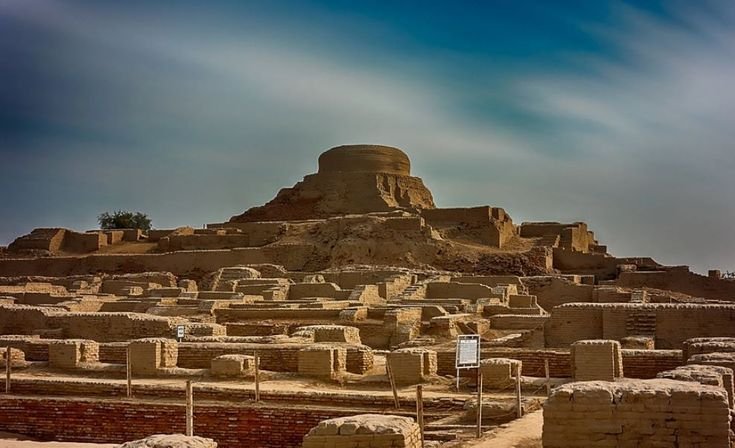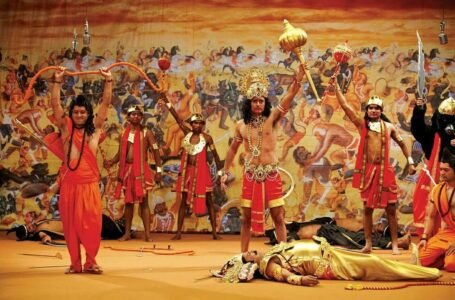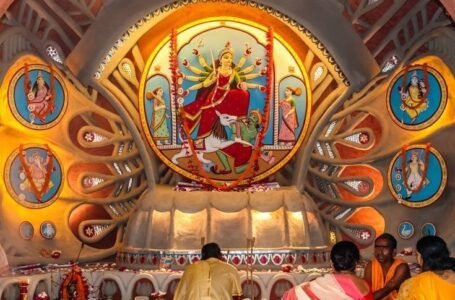Mysteries of the Indus Valley Civilization: A Glimpse into One of the World’s Oldest Urban Cultures

The Indus Valley Civilization (IVC), one of the world’s earliest urban civilizations, thrived between 2500 BCE and 1900 BCE in what is now Pakistan and north-western India. Alongside Mesopotamia and Ancient Egypt, it formed one of the great early centers of human civilization. Known for its advanced urban planning, sophisticated trade networks, and remarkable craftsmanship, the Indus Valley Civilization laid the foundation for many aspects of modern society. Despite its significance, much about this civilization remains mysterious, primarily because its script has yet to be deciphered. However, archaeological discoveries have provided substantial insight into its history, geography, economic systems, social structures, and eventual decline.
Historical Background and Discovery
The history of the Indus Valley Civilization can be divided into three primary phases. The Early Harappan Phase (3300–2600 BCE) saw the rise of agricultural settlements, where people began domesticating animals and cultivating crops, leading to the formation of small villages. The Mature Harappan Phase (2600–1900 BCE) marked the peak of urbanization, with well-planned cities emerging across the region. This was the golden age of the civilization, characterized by impressive architectural feats, flourishing trade, and an organized society. The Late Harappan Phase (1900–1300 BCE) saw a gradual decline, as urban centers were abandoned, trade connections weakened, and populations migrated to different areas.
The civilization was rediscovered in the 1920s when archaeologists Daya Ram Sahni and R.D. Banerji conducted excavations at Harappa and Mohenjo-Daro. These discoveries, made by the Archaeological Survey of India, revealed the existence of a highly developed ancient society that had remained hidden for thousands of years. Since then, further excavations have uncovered numerous sites across Pakistan, India, and even parts of Afghanistan, deepening our understanding of the civilization.
Geography and Major Sites
The Indus Valley Civilization covered a vast area of over 1.25 million square kilometers, making it one of the largest early civilizations. It was centered around the Indus River and its tributaries, such as the Ravi, Sutlej, and Ghaggar-Hakra Rivers, which provided fertile land for agriculture and facilitated trade. The geographical advantages of the region enabled the growth of thriving cities and complex societies.
Several major sites of the Indus Valley Civilization have been uncovered, each revealing different aspects of its urban culture. Harappa, located in present-day Punjab, Pakistan, was one of the first sites to be excavated and gave the civilization its name. Mohenjo-Daro, in Sindh, Pakistan, is one of the most well-preserved sites, showcasing remarkable city planning, including a sophisticated drainage system and public baths. Dholavira, in Gujarat, India, is particularly notable for its advanced water conservation techniques, indicating an understanding of water management. Lothal, another site in Gujarat, served as an important port city, facilitating trade with other civilizations such as Mesopotamia. Rakhigarhi, in Haryana, India, is considered one of the largest known sites, suggesting that it may have been a major center of power and influence within the civilization.
Urban Planning and Architecture
One of the most striking features of the Indus Valley Civilization was its meticulous urban planning. Unlike other early civilizations, which often grew in an unstructured manner, the cities of the Indus Valley were laid out in a grid pattern, demonstrating a high level of organization. Streets were wide and intersected at right angles, allowing for efficient movement within the city. Houses were constructed using standardized baked bricks, with some being multi-storied, indicating a sophisticated understanding of architecture and construction.
The civilization is also famous for its advanced drainage system, which remains one of the most impressive achievements of the ancient world. Every house had a connection to a well-constructed drainage system that carried wastewater away from residential areas. Public buildings, such as the Great Bath in Mohenjo-Daro, suggest that bathing and sanitation played an essential role in their society. The presence of large granaries indicates that food storage and distribution were managed in an organized manner, possibly under the control of an administrative authority.
Economy and Trade
The economy of the Indus Valley Civilization was primarily based on agriculture, with a wide range of crops cultivated, including wheat, barley, millet, and legumes. The people were among the first to cultivate cotton, which later became an important trade commodity. Animal husbandry was also a crucial part of their livelihood, with domesticated animals such as cattle, buffalo, sheep, and goats playing a significant role in daily life.
Trade was a vital aspect of the civilization’s economy, and evidence suggests that the Indus Valley people engaged in commerce with Mesopotamia, Persia, and Central Asia. They exported goods such as cotton textiles, beads, pottery, and precious stones, while importing metals like copper, silver, and tin. The discovery of seals with inscriptions in Mesopotamian sites indicates that the two civilizations had a direct trade relationship. The city of Lothal, with its well-planned dockyard, served as a crucial trading hub, facilitating maritime trade with distant regions.
Social Structure and Daily Life
The social structure of the Indus Valley Civilization remains somewhat mysterious due to the absence of decipherable written records. However, archaeological evidence suggests that it was a highly organized society with distinct social classes. The uniformity in housing styles indicates that there was no extreme disparity between the rich and poor, unlike in contemporary civilizations where grand palaces and temples were prominent. This suggests a more egalitarian society with an emphasis on civic planning.
People of the Indus Valley Civilization were skilled artisans, producing a variety of goods such as pottery, jewelry, and metal tools. They were particularly known for their expertise in bead-making, with intricate designs crafted from semi-precious stones like carnelian and lapis lazuli. The discovery of terracotta figurines and toys indicates that leisure activities and artistic expression were important aspects of their culture.
Religion in the Indus Valley Civilization remains a subject of debate. Seals depicting figures resembling Shiva (Pashupati) and mother goddess figurines suggest the presence of religious beliefs related to fertility and nature worship. However, the absence of grand temples or religious monuments makes it difficult to draw definitive conclusions about their spiritual practices.
Language and Writing System
One of the greatest mysteries of the Indus Valley Civilization is its writing system. Thousands of seals and inscriptions featuring pictographic symbols have been discovered, but the script has not yet been deciphered. Unlike Mesopotamian cuneiform or Egyptian hieroglyphs, which scholars have successfully translated, the Indus script remains an enigma. If deciphered, it could provide invaluable insights into the civilization’s administration, beliefs, and daily life.
Decline of the Civilization
The decline of the Indus Valley Civilization around 1900 BCE remains a topic of speculation. Several theories have been proposed, including climate change, environmental degradation, shifting river courses, and invasions by nomadic tribes. Some scholars believe that prolonged droughts and the drying up of the Sarasvati River may have forced people to migrate eastward, leading to the eventual abandonment of the cities. Others argue that economic decline and weakening trade networks may have played a role.
Regardless of the exact cause, the urban centres gradually faded away, and their influence diminished. However, elements of the Indus Valley Civilisation persisted in later cultures, contributing to the development of Vedic society and early Indian civilisation.
Indus Valley Art
Seals and Stamp Cylinders:
One of the most distinctive forms of Indus Valley art are the seals and stamp cylinders, which were used to mark property, goods, and other objects. These seals were made of soapstone and often depicted animals like unicorns, bulls, elephants, and rhinoceroses, along with human figures. They typically feature intricate geometric patterns and motifs, showcasing the skill of artisans in carving and engraving.
The most famous of these seals is the so-called “Unicorn Seal,” which depicts a single-horned animal, possibly symbolising a mythological creature. Some of these seals also feature a short script, which is yet to be fully deciphered, adding an intriguing layer to the art’s mystery.
Pottery:
Indus Valley pottery was highly functional and often beautifully decorated. The pottery was typically hand-formed, though some were made on a potter’s wheel, and included large storage jars, bowls, and cups. The pots were often adorned with red and black painted designs, which included geometric patterns, animals, and human motifs. These designs were skilfully executed, indicating a high degree of artistic refinement.
Sculpture:
Indus Valley sculpture includes both small and large figurines. The figurines were primarily made of terracotta, though there are also examples of ivory, bronze, and other materials. The “Dancing Girl” from Mohenjo-Daro (c. 2500 BCE) is one of the most famous sculptures, showing a young woman in a dynamic pose, wearing jewellery, and displaying a naturalistic sense of movement.Another important sculptural work is the “Priest-King” statue, which represents a man in a seated position, wearing a headpiece and an elaborate beard, possibly symbolising ruler or a religious figure.
Metalwork:
The Indus Valley people were skilled in working with metals, particularly bronze and copper. They created tools, weapons, and decorative items, often using a technique called lost-wax casting, which allowed them to produce intricate shapes and designs. Jewellery made from gold, silver, and semi-precious stones like carnelian and turquoise was common, with beads and necklaces being particularly popular.
Conclusion
The Indus Valley Civilization stands as a remarkable testament to human ingenuity and social organization. With its advanced urban planning, efficient trade networks, and artistic achievements, it set a precedent for future civilizations. Despite the mystery surrounding its language and ultimate decline, the legacy of the Indus Valley Civilization continues to influence our understanding of ancient history. As ongoing excavations and research continue to reveal new insights, the civilization remains an enduring symbol of one of the most sophisticated cultures of the ancient world.


